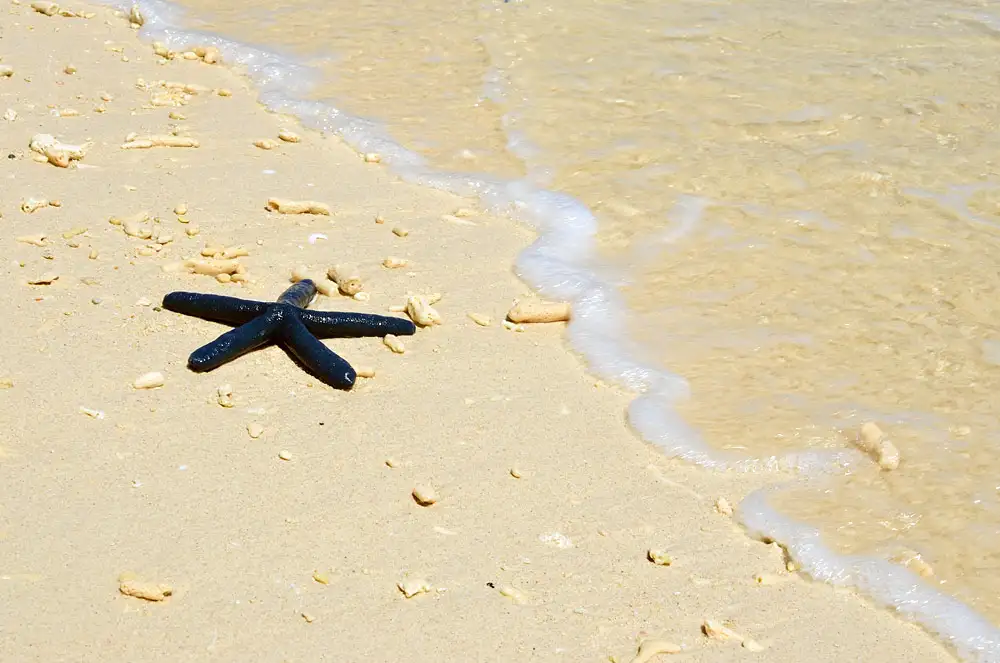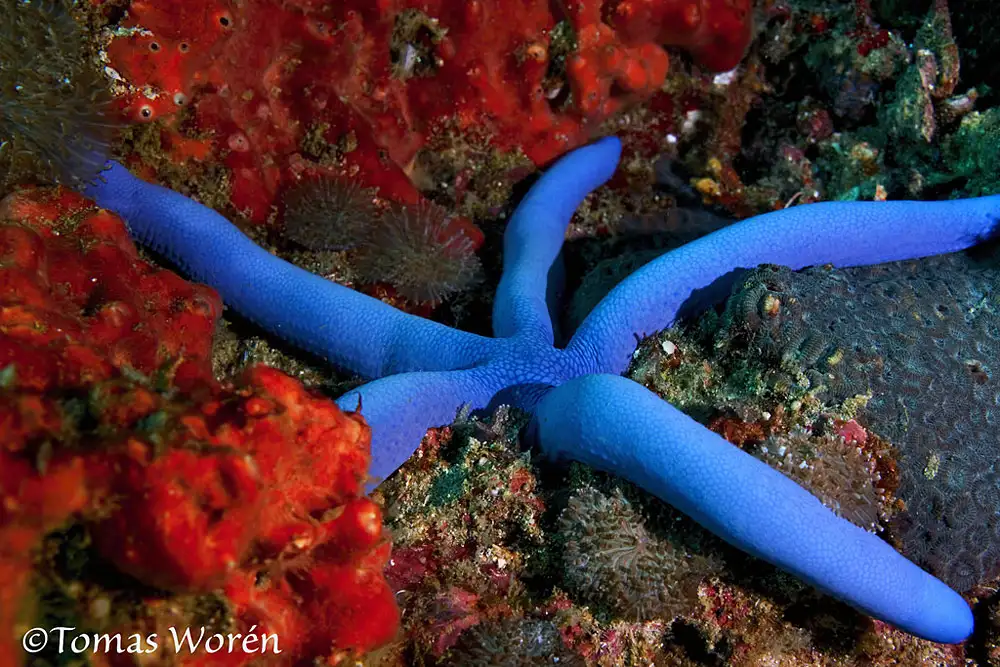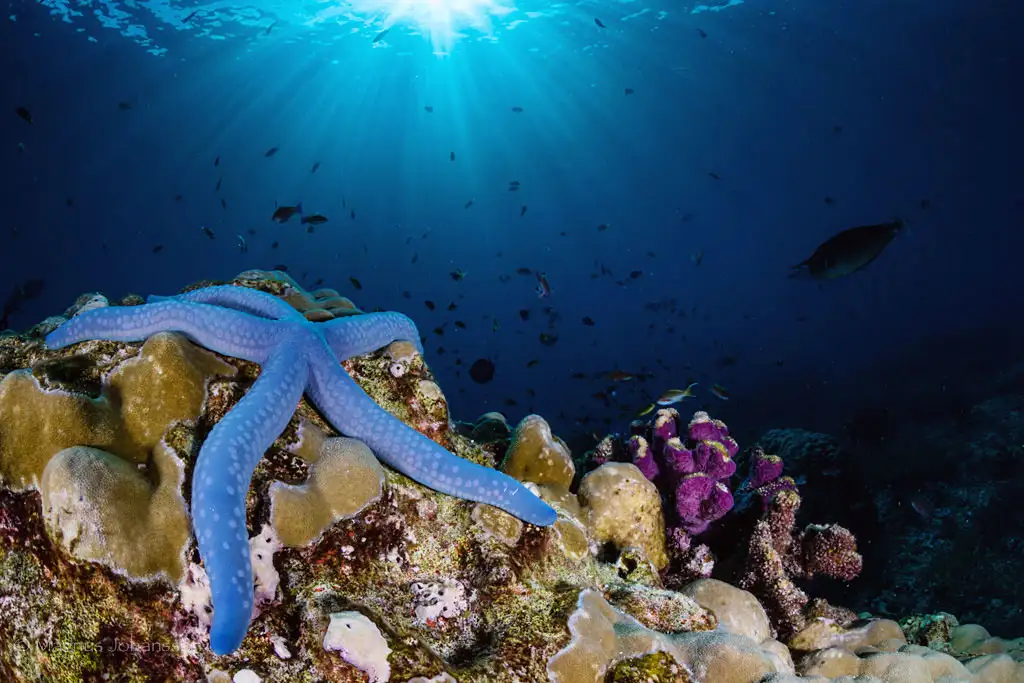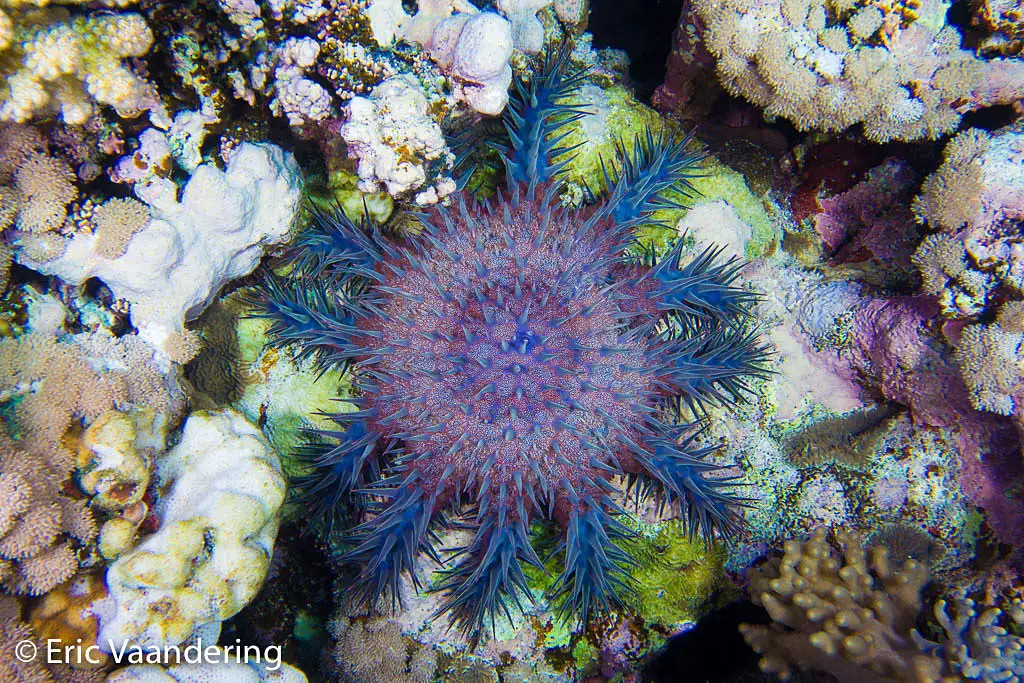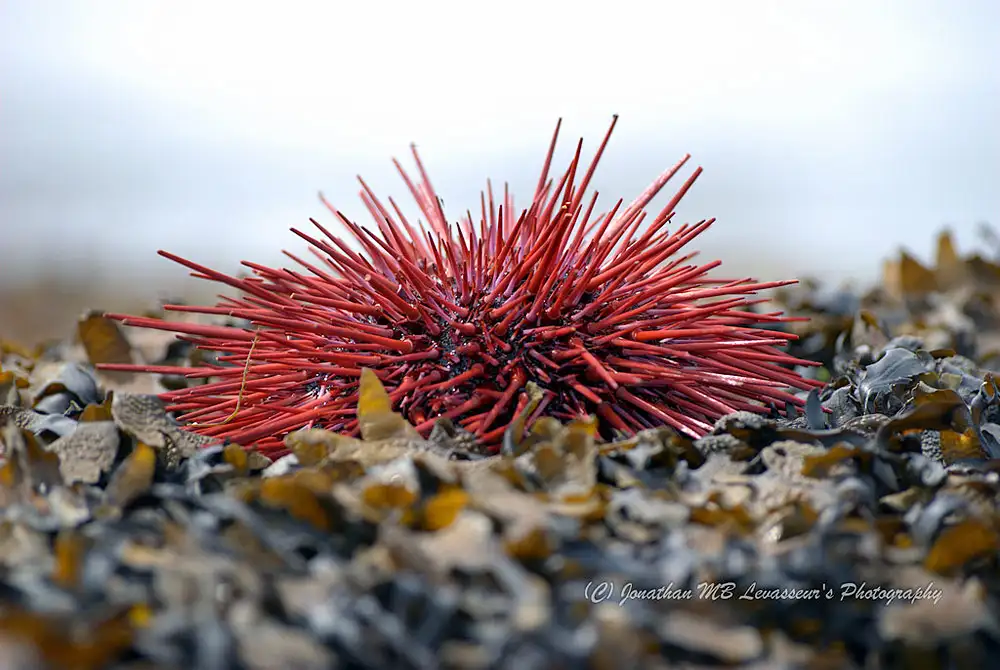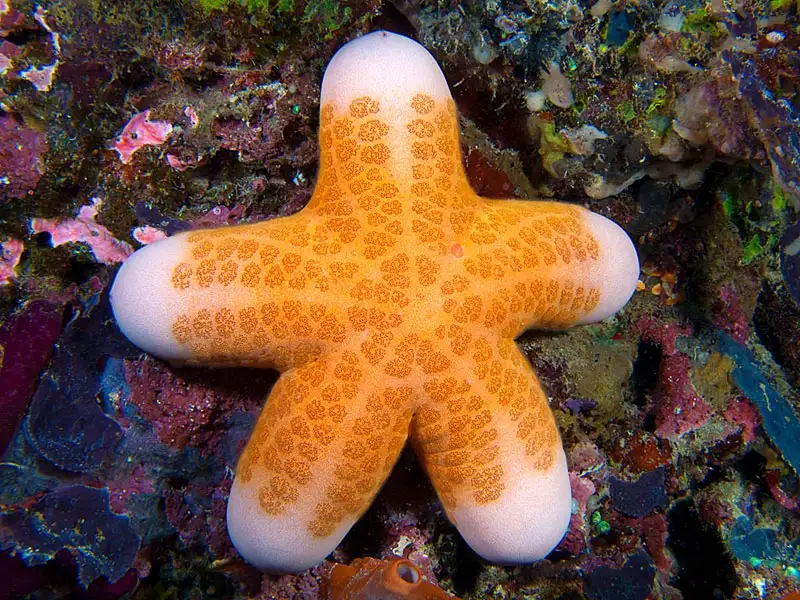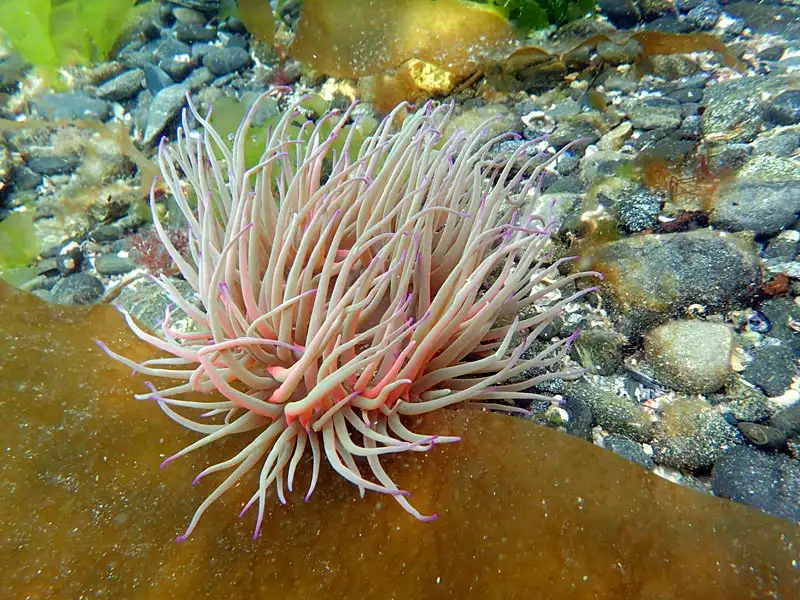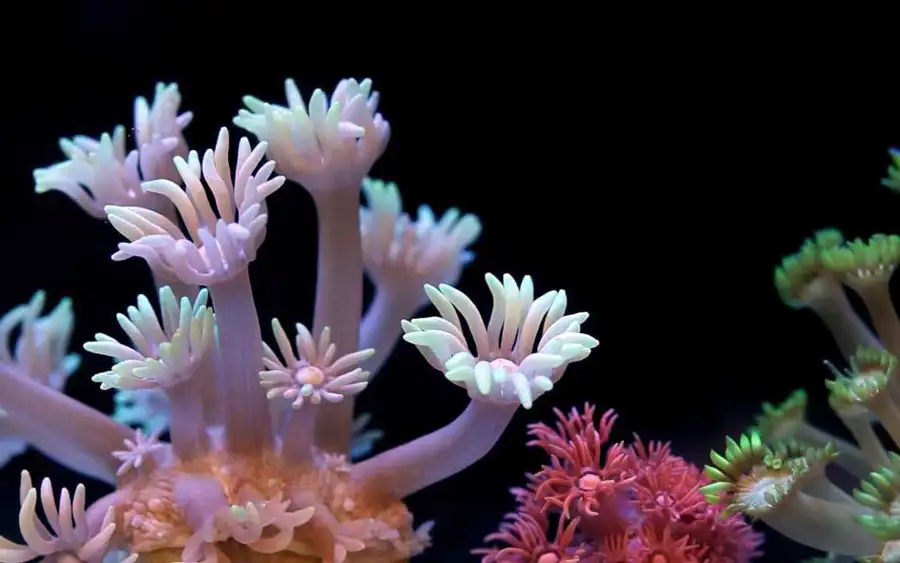Linckia laevigata (Blue Sea Star)
IUCN
LCBasic Information
Scientific classification
- name:Linckia laevigata (Blue Sea Star)
- Scientific Name:Linckia laevigata
- Outline:Echinodermata
- Family:Ophidiasteridae Linckia
Vital signs
- length:Arm‑to‑arm diameter 15–30 cm
- Weight:Variable; not standardised
- lifetime:Several years (environment‑dependent)
Feature
Vivid blue; cylindrical arms; grazes biofilms/detritus; strong autotomy/regeneration; broadcast spawning.
Distribution and Habitat
Tropical Indo‑Pacific shallow reefs and lagoons (1–25+ m) on hard/coral rubble substrates.
Appearance
Five long blunt‑tipped arms; relatively smooth dorsum; oral ambulacral grooves with tube feet; blue dominant colour.
Details
Linckia laevigata—the blue sea star—is an ophidiasterid asteroid conspicuous on tropical Indo‑Pacific reefs. It is best known for its vivid blue coloration (purple/green/brown or mottled morphs occur) and its remarkable ability for arm autotomy and regeneration, producing “comet” forms from detached arms.
Ecology & Biology
Diet: grazes biofilms, microalgae and detritus, and may scavenge carrion.
Reproduction: chiefly a broadcast spawner; also capable of asexual arm‑based regeneration (comet forms developing into complete stars).
Regeneration: strong autotomy/regrowth makes it a model in echinoderm regeneration studies.
Identification
Typically five long cylindrical arms with blunt tips; dorsum relatively smooth (the epithet “laevigata” means “smooth”). The oral side shows ambulacral grooves and tube feet. Colour most often cobalt/azure blue with regional variation.
Size & Longevity
Size: arm‑to‑arm diameter commonly 15–30 cm.
Life: usually several years, depending on conditions.
Range & Habitat
Widespread across the tropical Indo‑Pacific on shallow reef flats/slopes and lagoons over hard or coral‑rubble substrates (~1–25+ m).
People & Conservation
Handling: avoid lifting or prolonged exposure to air—skin is delicate and stress can trigger autotomy.
Pressures: habitat degradation and collection for the curio/aquarium trade; practice no‑touch viewing and sustainable management.
IUCN: marked here as Not Evaluated (NE) for this overview; see species‑level assessments for updates.
FAQ
Q1. What are “comet” sea stars? Detached arms that regenerate a new central disc and remaining arms, appearing like a comet with a trailing arm.
Q2. Is every individual bright blue? Blue predominates, but purple/green/brown and mottled morphs occur; colour varies by individual and region.
Q3. Suitable for aquaria? Sensitive to handling/transport and reliant on biofilm‑rich substrates—generally not recommended for beginners.
Q4. Any safety concerns? For the animal’s welfare, do not touch or remove from water; stress may cause arm loss.

